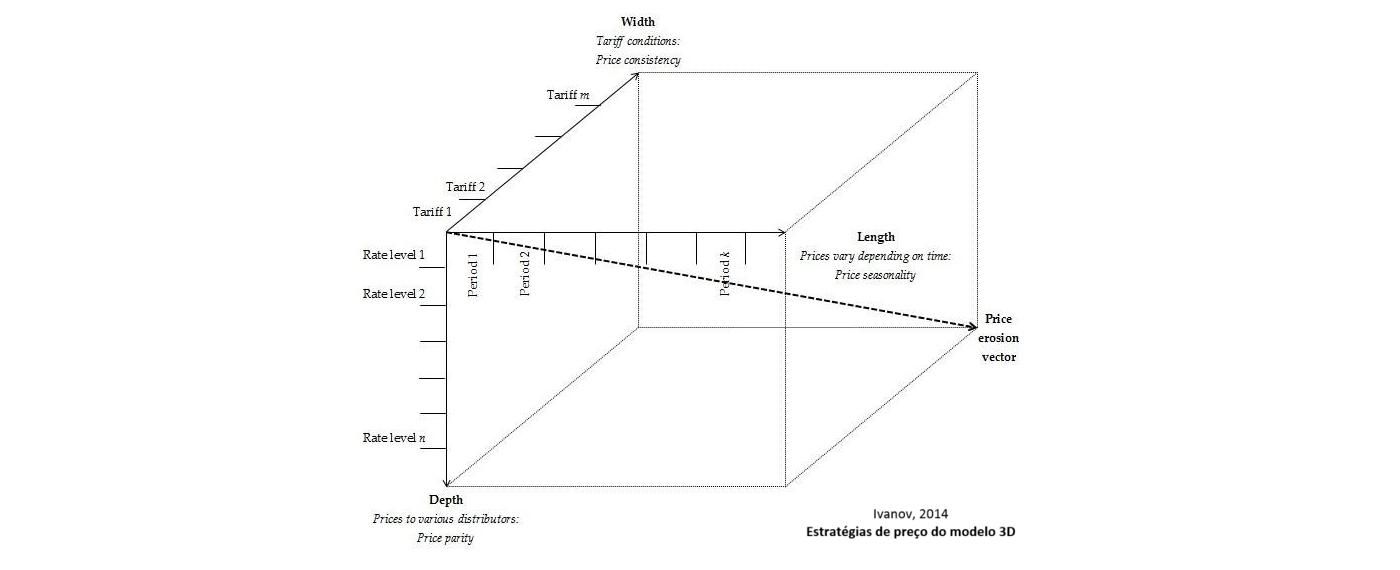From a strategic point of view, hotels can apply different pricing strategies for the purpose of creating value. In the following table we can find a brief summary of the various strategies for creating value according to the chosen option. This strategic choice depends on some factors, such as the type of accommodation we have, type of property, offered services, business goals, competitors and other factors discussed below.
What is pricing?
It is the practice or set of practices adopted by a company in a more or less procedural way with the purpose of defining its selling price. It usually depends on multiple factors and goals of the company. There are different pricing methods and strategies that take into account several factors[1], such as:
-Ease of calculation
-Estimation and evaluation of costs
-Market competitive analysis
These are the most used factors to choose a method of calculation, however with the development of new revenue management tools (RMS) it is possible to be more dynamically adaptable to the market and with a greater degree of customization to the client and his needs in a much more effective way. The approach to the calculation methods will be made in a next opportunity. In this article the focus will be to know the different pricing strategies and factors to be taken into account for an effective revenue creation strategy.
1. The implementation of an effective pricing strategy
In general, we can say that for the development of a good pricing strategy, the hotel has to carry out a multidisciplinary analysis, appealing to all the departments of the organization. In this way, six organizational skills are identified that are essential for establishing a highly effective and successful pricing strategy.
Essential Skills:
1. Price execution (policies and procedures)
2. Pricing strategy
3. Advanced analysis and pricing
4. Organizational and management alignment
5. Technology and data management
6. Taxes and regulatory efficiency
In these specific points all the properties must carry out a benchmarking exercise with the best competitors of the industry for their type of business, this practice has the main goal of identifying in which pillars we can have room to improve and where we should focus our attention as a priority. These are the generic pillars, however there are factors such as, category, quality / value, image, product life cycle stage, additional services, competition, sales volume, demand, elasticity of the demand, affiliation in a chain, distribution power, marketing strategy, organizational structure, taxes policy and costs, which will decisively influence our pricing strategy.
2. General pricing strategies
Prices (value) based on demand:
This is perhaps one of the most commonly used models today. The hotel establishes high prices for those who have a larger budget, there being a low price elasticity, but producing a great value perception. This model is consistent with THRM[2] goals of revenue maximization, but it may cause some dissatisfaction with who pays for the higher fares.
Price based on cost
The price of services at the hotel is established based on the associated costs, the fixed and variable costs are calculated and the price is established by a predefined margin or objective of the result. It is easy to apply however, it does not take into consideration the fundamentals of THRM, such as variation of demand, occupancy or revenue already performed.
Targeted price for market penetration
A low price is established with the main objective of attracting and stimulating demand, this is widely used when there is a new property opening or it wants to expand its market (increase market share or capture a specific segment of customers).
Price skimming
It is characterized as being almost the opposite of the previous strategy of market penetration. High prices are set to meet the high demand, for example for a new service or product (it is intended to reach an interested segment with high associated value).
Price set in packages (Bundle or Packaging)
The hotel proposes to sell two or more services together in a package, with a single price for example, spa with accommodation, accommodation with meals and spa, etc. The goal is to stimulate the sale of other hotel services, reaching superior revenue. The total price of the package must be less than the purchase of the services carried out separately.
Optimum product price
A base price is included only for accommodation or bed and breakfast (the lowest). All other services are paid for and sold separately. It is a more comprehensive pricing strategy with base values and higher options if the guest desires so.
Psychological price
The price is established considering the psychological influence of numbers. For example, there are numbers which are psychologically associated with promotions for example, numbers ending in 9 or 99. While others have exactly the opposite effect and communicate value, for example, 0 or 100. It is proven that there is an effect associated with some numbers which may favor the booking and revenue (Collins & Parsa, 2006).
Promotional price
Hotels opt for a generalized temporary price cuts, to increase their competitiveness and attract more bookings in that period. This reduction is temporary, with a predetermined period of time.
Captive product pricing
Applied when the consumption of two or more products, are dependent on each other and linked. For example, consumables and printers, companies put one product cheaper at the expense of the other. In the hotel proprieties we can lower the accommodation to the detriment of the purchase of complementary products such as golf, spa, restaurant, etc.
3. 3D model pricing strategies
Based on all pricing strategies, hotels must make a correct planning to figure out which ones to use and what they are going to give away for the best results. As previously noted, the goal is to optimize revenue, so consistency is a key factor in a strategy. Probably throughout the year hotels will be able to use at different times, different strategies combined with each other, that will reinforce their identity and achieve company goals.

In addition to the traditional pricing strategies, we can also find a price strategy model called the 3D pricing model. This is more complex (Ivanov, 2014)[3], as it takes into account three major dimensions: strategic length, strategic width and strategic depth. These three dimensions will help properties in the process of defining and characterizing their pricing strategy, taking into account their main objectives.
The length of the strategy will correspond to the seasonality presented by the rates. Through the representation by seasons, the more seasons the property uses the longer will be its strategy from the conceptual point of view. This practice is more associated to leisure markets, with large tourist flows, located in regions of high seasonal fluctuations. Properties located in these destinations use multiple periods in which they establish differentiated rates, the highest in periods of high demand and lower rates in low season. On the other hand, hotels with higher levels of service and higher classifications are more associated with a lower number of seasons with lower rate variations (Espinete t al., 2012).
The width of the strategy corresponds to the different practiced prices, depending on the different booking conditions, for example, with free cancellation, non-refundable, early bookings or length of stay.
The depth corresponds to the rate levels used for the commercialization of accommodation services, according to their distribution channel. The hotels establish different rates for different distribution channels, according to their designation, direct sales, GDS, OTA's, Operators, travel agents, websites of group purchases, etc.

4. Main pricing tools in Revenue Management
Price is one of the strongest tools with regard to the positioning of our hotel in the market, through this are created expectations for future guests about the service provided and their expected quality. From a strategic point of view we cannot use contradictory tools or that go against the pre-established pricing strategy, otherwise we will destroy the hotel's image or value. In these revenue management tools we find those that specifically concern price, non-price related tools and mixed tools (we will list the first and third only).
Tools specifically related to price:
- Price discrimination (tariff barriers)
- Dynamic prices implementation
- Best price guarantee
- How the price is presented to the customer
- Price parity
Mixed tools:
- Correct management of distribution channels
- Optimum allocation of the rate per room and its rate structure
For example, we should not use abusively aggressive discounts when we are based on a value and high prices strategy or on skimming strategy.
Final considerations:
It is important to keep in mind that whatever our pricing policy is and the strategy adopted, it must be consensual throughout the organization and made in a procedural way. The whole strategy must be aligned and one of the key factors for its success is the consistency of the tools used, with the strategic aspect, the booking conditions and sales policies. In this way we will have a winning pricing model that we will use for the elaboration of a correct rate structure (to be addressed in a next article).




